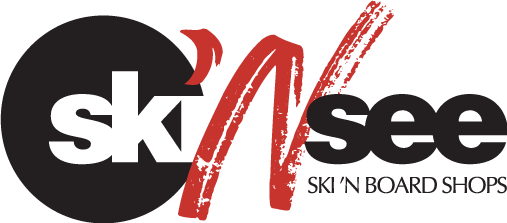Wearing the wrong size ski boots can not only be painful, it can be costly. Finishing a full day on the mountain is difficult if you are in pain and stopping into the resort shop to rent a pair can add to the cost of the day.
Boots are in European sizes, so you might need to be a little flexible with the size you think you should be in when buying a new pair and expect to try on several before finding the right fit.
When you first put on ski boots, your toes should just touch the end. Once they are buckled up and you bend your knees, as you will while you’re skiing, your heels should go back and your toes should pull away from the front. If not, try a larger size. Having boots too large, however, can lead to rubbing and air pockets that make your feet cold. Always try on boots with a slim fitting, ski sock – never layers of socks.
Women’s boots are not just smaller versions of men’s boots, they are built differently. Women’s calf muscles tend to extend lower on their calves and therefore manufacturers have cut down the back side of women’s boots to avoid rubbing. It’s not that either won’t work, it will just be a bit more comfortable.
Performance skiers often wear boots that fit more snuggly than a beginner or someone who tends to take it easy on the mountain.
Renting
When you are renting skis, try on your boots every time you pick up a new rental package. It is just not worth ruining your day to try to remember your size from the last time you skied, or from deciding that every brand makes sizes that fit exactly the same when that is not the case. Make sure you try on both boots, because feet can differ in size, and buckle them all the way up. It’s worth a little extra time in the shop to take these steps.
Flat Feet Options
People with flat feet can find themselves in even more pain if the fit isn’t right. A lack of arch in a boot can provide too little support for some. In turn, too high of an arch can push too hard into the arch of a flat-footed person.
If you are buying boots for flat feet, orthotics or custom boot fitting may be the only way to go to get a pair that will not lead to pain during your ski day. All flat feet are not created equal, so spending some time with a boot fitting expert will be well worth it.
Kids
Parents may wonder how they will know if their little one’s boots are really fitting as they should. Beyond measuring their feet, thankfully manufacturers have created liners that can be removed from boots so you can actually feel how their feet fit in the boot.
Allow a little room for growth, but more than two adult fingers is too large and will not support them properly. As adults should do, have your child buckle up boots all the way and walk around in them to check for any hot spots that could cause blisters. If the shop worker can’t do anything to adjust the hot spots, you may need to try another boot.
If you are buying or renting for the season, you might want to take your child into the shop in the middle of the year to measure his or her feet again and make sure the boots still fit.
Skill level is also important when you are setting bindings on skis. Bindings are set tighter for higher skill levels because you don’t want your skis popping off if you are skiing moguls or making major jumps. However, the wrong binding setting can lead to serious injury if you set them for a higher level and really need them to pop off in a fall.

